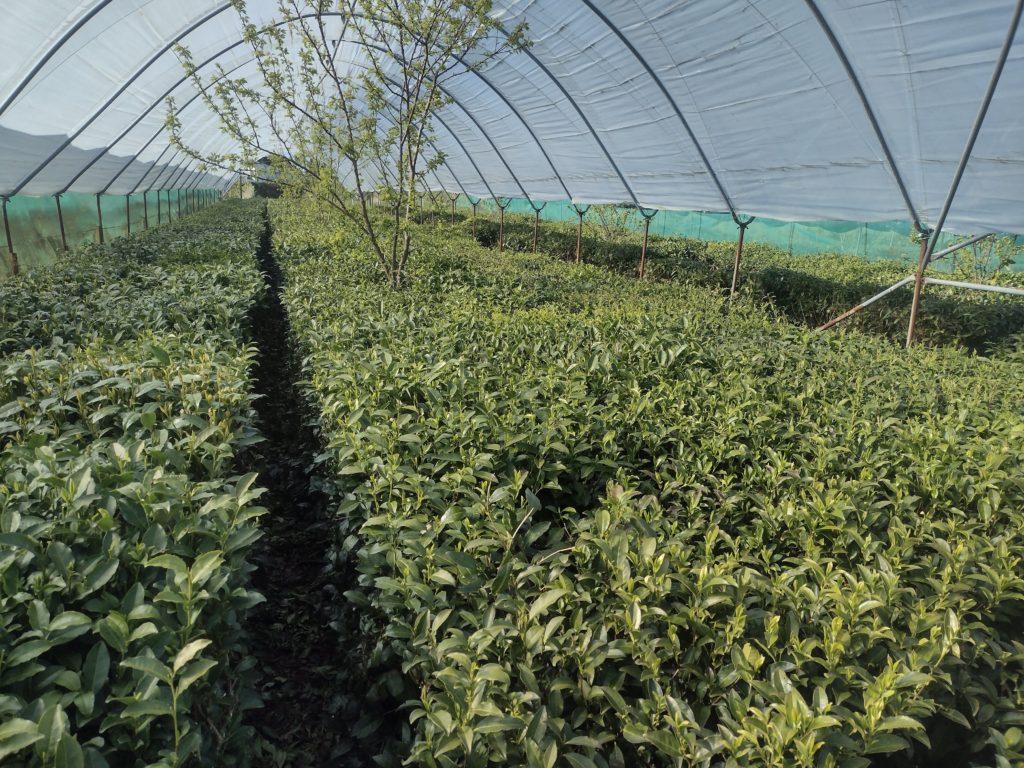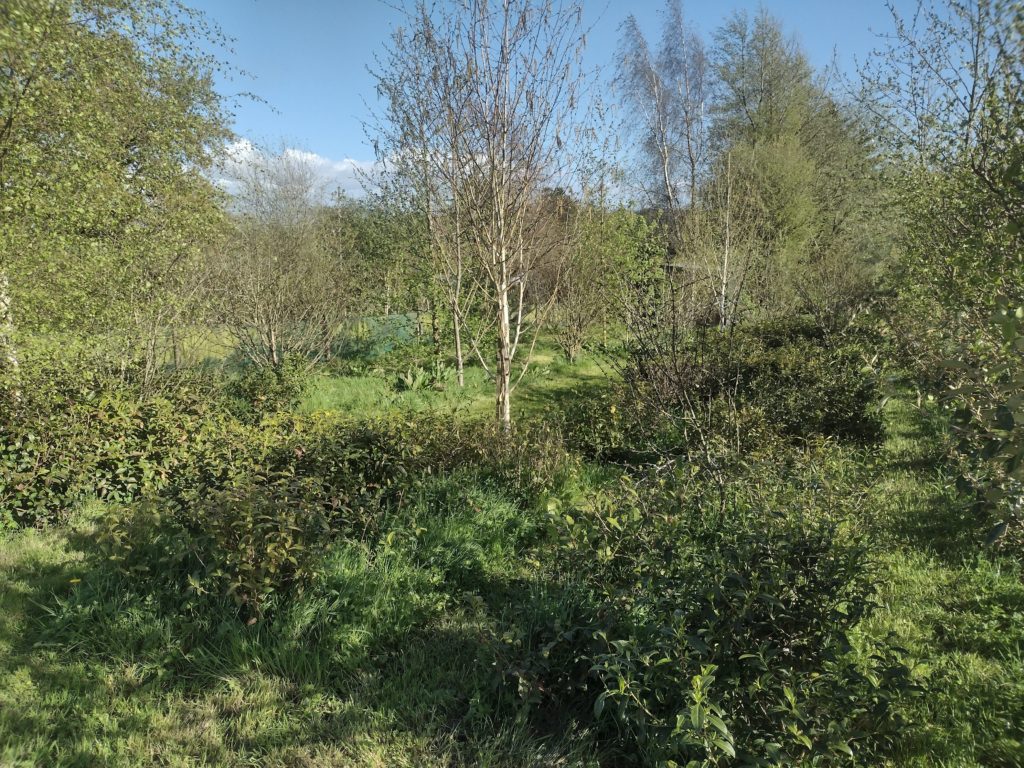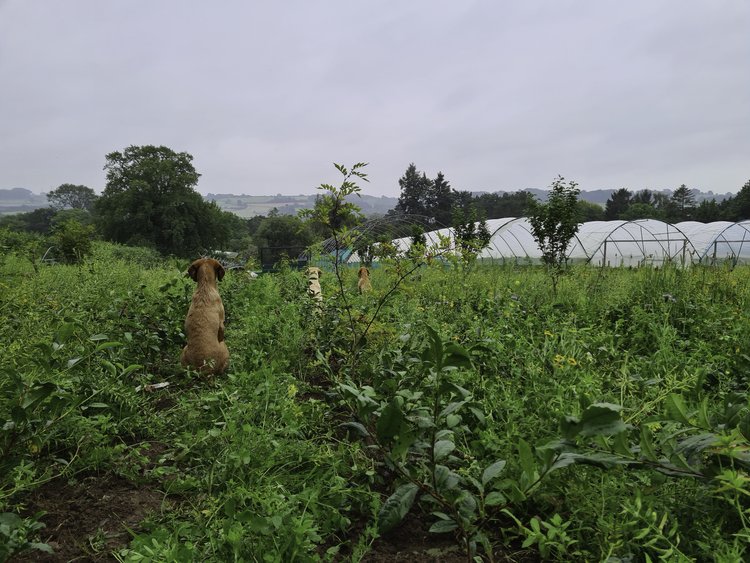Welsh Food Stories: A Tea Plantation in the Vale

Carwyn Graves
The work needed to make a homely cup of tea may be hidden from most of us – but is real enough.
“People are amazed when I explain all the steps in the process”, farmer Lucy George from the village of Peterston in the Vale of Glamorgan, says with a laugh.
She has managed to pull off the semi-impossible and is now successfully running a tea plantation in temperate, blustery Wales – but the challenges in creating a cup of homegrown brew tell us even more about our strange food economy than about our fickle climate.
The tale of Welsh tea
Tea first came to Wales in the 1660s, the tea plant being native to southern China. It gradually gained ground, becoming widespread first among the well-to-do and then among the general population by the middle of the 18th century.
As with coffee, tea’s stimulant properties helped endear it among campaigners against drunkenness in this period – but it was ultimately its affordability that made it the comfort beverage of choice.
This affordability first came about through British naval power, giving favourable trading advantages to UK-based tea companies (such as Twinings and Tetleys) and was then embedded through the establishment of huge tea plantations in (British-controlled) India.
In many ways, then, it was Wales’ place in the British Empire that enabled this habit to take hold here.
It quickly affected social patterns, with socialites writing in Welsh about ‘mynd i yfed te at ryw ferchettos’ (going to drink tea with some fancy ladies) by the 1700s, and others decrying the ‘siarad gwageddol’ (empty talk) that was becoming common over a tea table.
But in offering a warm and affordable comfort to people of all backgrounds, tea’s social role in this country for nigh on three centuries shouldn’t be underestimated.
And despite the coffee boom of the past decade, tea has so far held its place in Welsh affections and habits. Wrexham seems to have the highest number of tea-drinkers in the UK, while many more people in Wales continue to take tea-breaks (76%) than across other parts of these islands.
In our ability to buy cheap tea bags worth only pennies each, we benefit from a global commodity market worth $120 billion – a market where those who do most of the labour to pick the tea earn around £3 a day.

Dedication
“I want to do this in order to prove that Welsh tea could be a genuinely viable option economically for small farms – with biodiversity benefiting too,” Lucy explains on a bright afternoon on her farm.
The young trees around me, alive with the sound of spring birdsong, reflect the increasing wildlife gains on this former pick-your-own fruit holding.
“I reckon we now have 12,000 plants in the ground, with the first ones going in in 2017. There’s obviously a lag until they’re ready for harvesting, but we’ve now been producing on a serious scale since 2021.”
That production spans the range of teas, from classic black, to oolong, white and floral greens, with fermented kombucha filling out the offer.
A row of these tea plants takes Lucy – or one of her volunteer helpers – a full day to pick, before even starting the process of making the tea.
With a constant need to tend the plants, many of them raised from seed, transplant new ones and ensure conditions are propitious for making the right teas, it becomes clear how much dedication is needed.
Beyond this, making tea from plant to pot is a highly skilled process. The right varieties need growing in the right places (not something for which there is much local expertise in Wales!), which then need assiduously picking at the right stage of growth.
As Lucy tells me, everything from ground moisture levels to wind direction have a bearing on that. Then the leaves need withering at the right temperature before they can be rolled.
When to do that? Again, a matter of assessing the feel and smell of the tea. Finally, for a black tea, the leaves need something like 2-4 hours oxidizing.
“You can go away to do something else for five minutes with that, then come back and realize ‘Damn, I missed it!’”.
As Lucy says with passion clearly born from experience “if you’ve had a bad day, the tea you make reflects that.”

Mixed economy
When I taste a batch of the black at home, the rich hay-like smell emanating from the teapot convinces me there, if I needed it, of the value in what Lucy has set out to do.
She’s already explained that one of the ways she was hoping to make Welsh tea work was by producing tea in batches, rather than blending.
“That way you can taste the variation across the season, and at best when conditions and the preparation has gone just right, you can end up with a stunning tea.”
This batch of tea has a full, memorably floral flavour with light citrus touches which reminds me of delicate Japanese brews I have previously tasted. A builders’ brew it certainly isn’t – and can probably never be in our climate.
But despite retailing at £16 for a pot of loose leaf and half of this year’s batches already sold via preorder, it’s the kombucha (made from fermented tea leaves) that’s keeping the business afloat.

Over time, with plants becoming established and skill levels growing, it’s not hard to see the economics working out better – and opportunities arising for other farms to join in production, with benefits from sharing equipment and expertise.
But even with the best of circumstances, this is likely to remain an expensive brew. That is largely a function of the price of labour in Wales over against its cheapness in former colonies.
In other words, the long shadow of decisions made in the early days of Empire that are still affecting supply and demand – and Wales’ own first tea plantation – a full half century after its end.
This is part of a monthly series on Nation.Cymru on the diversity of Welsh food culture by Carwyn Graves whose new book is out now. You can read the other installments of the series here.
Support our Nation today
For the price of a cup of coffee a month you can help us create an independent, not-for-profit, national news service for the people of Wales, by the people of Wales.







You can make tea from the leaves of ornamental camellias in fact, someone in Australia did it and wrote a blog: https://pandragonathome.blogspot.com/2009/11/making-black-tea-from-your-camellia.html
I have actually tried it myself as well: